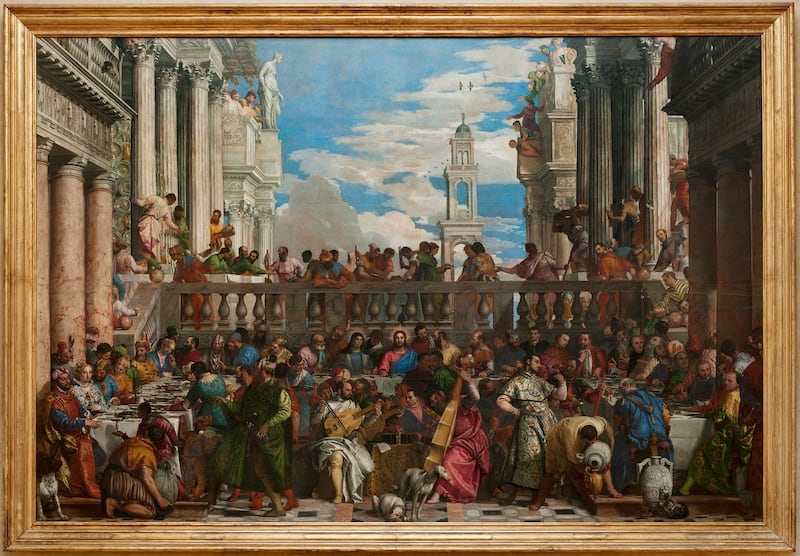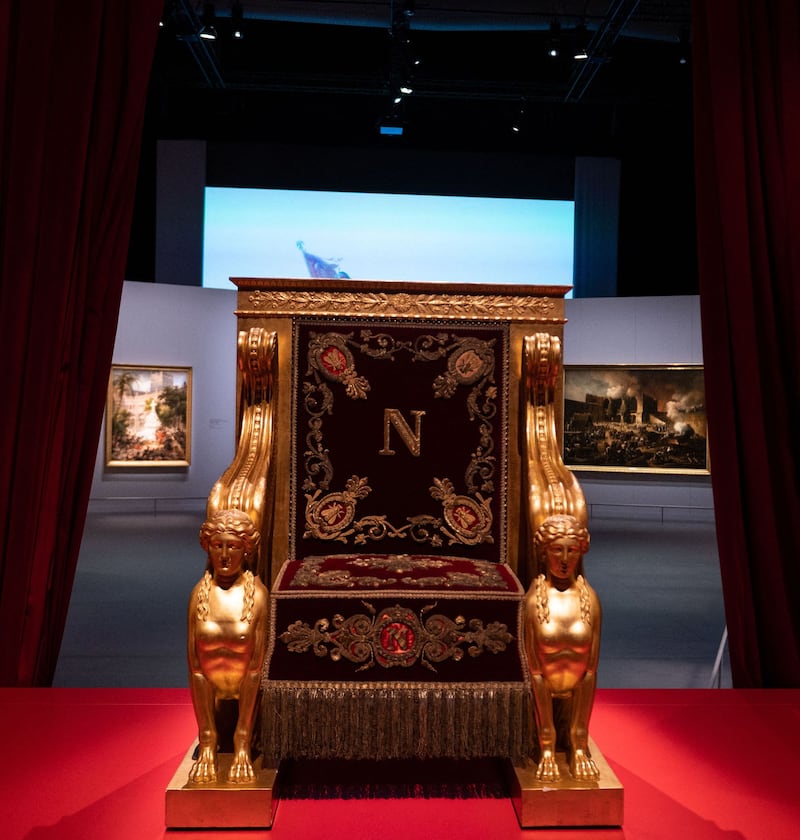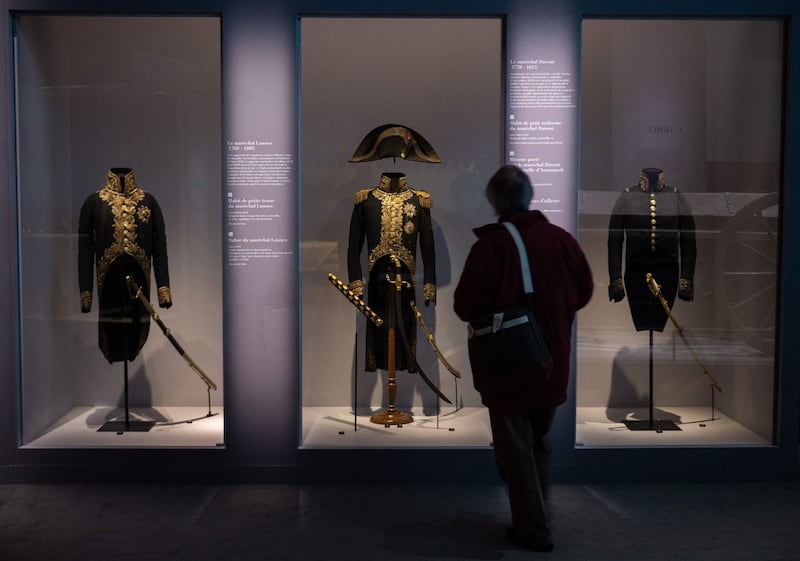The spoils of war were positively magnificent. When Napoleon Bonaparte led his army across the Alps, he ordered the Italian states he conquered to hand over artworks that were the pride of the peninsula. The Vatican was emptied of the Laocoon, a masterpiece of ancient Greek sculpture, and Venice was stripped of Veronese’s 1563 painting The Wedding Feast at Cana.
The aim was to "unite the greatest masterpieces of art in Paris" and "bring together, in a nation freed from despotism, all the products of human genius", a video monitor in the huge new exhibition Napoleon, at the Grande Halle de la Villette, in Paris, until September 19th, says of the expropriation.
He brought back enough loot from his conquests to fill what would soon become the Louvre Museum. And his ravenous and methodical art seizures – a cultural legacy now being highlighted in 200th-anniversary commemorations of his death – paved the way for similar French excesses in sub-Saharan Africa a century later. Yet many of those works were returned after Napoleon’s defeat, setting precedents that still inform debates about restitution.
Napoleon sought to 'link himself to these works of genius' and justify their plunder by invoking 'the aims of the Enlightenment'
“Napoleon understood that the French kings had used art and architecture to aggrandise themselves and to build the image of political power, and he did exactly the same thing,” Cynthia Saltzman, the author of Plunder, a history of Napoleon’s Italian art thefts, says.
He pilfered about 600 paintings and sculptures from Italy alone, she notes, adding that he sought to “link himself to these works of genius” and justify their plunder by invoking “the aims of the Enlightenment”.
Once Napoleon was defeated in the Battle of Waterloo, in 1815, his adversaries hastened to give back the Louvre’s looted treasures. It was “truly doleful to look at now”, wrote the British miniature painter Andrew Robertson at the time, “full of dust, ropes, triangles and pulleys”.

Roughly half of the Italian paintings that Napoleon had taken were returned, Saltzman says. The other half stayed in France, including The Wedding Feast at Cana. Why weren’t the others returned? Many were scattered in museums around the country, and French officials resisted giving them back. Each formerly occupied state had to put in a separate request for the return of their artworks, which made the process even more complicated, according to Saltzman.
Today, France retains important pieces, including a major painting by Cimabue, panels from a Mantegna altarpiece, a painting by Titian and another Veronese, she adds. Yet the post-Napoleonic clear-out of the Louvre now serves as an example for the country as it starts to give back treasures taken from its former African colonies, says Benedicte Savoy, a historian who cowrote a 2018 report on restitution to Africa commissioned by President Emmanuel Macron.
Napoleon unquestionably founded the Louvre Museum as we know it today, with all the richness and variety of its collections
Savoy describes the 1815 cultural repatriation as “the first major important act of restitution in modern times” and says the negotiations were hotly debated by newspapers and by intellectuals such as Goethe and Stendhal. The “dismantling” of the Louvre, she says, was “the model for cultural restitutions” that followed.
Although a lot was given back, the Napoleonic plunder left a bitter aftertaste that lingers to this day. Italians still refer to “i furti napoleonici” (“the Napoleonic thefts”). In 2016 and 2017, masterpieces that Bonaparte had looted were showcased in a special Rome exhibition at the Scuderie del Quirinale.
Egypt regularly demands the return of the Rosetta Stone, which was excavated during Napoleon's occupation of Egypt (1798-1801), captured by the British at his defeat, and is now in the British Museum. A plaster cast of it is in the Paris exhibition.

As the exhibition reveals through a dizzying array of objects, including his monogrammed throne, a bejewelled sword and the rickety wooden stagecoach that took him to his grave, Napoleon was a complex figure whose political and cultural strategies were shaped by the French Revolution.
Ruth Scurr, a University of Cambridge lecturer who is the author of the new biography Napoleon: A Life in Gardens and Shadows, describes Napoleon as a conqueror. “He understands himself to be stabilising France, to be putting France’s interests first, to be bringing the country out of a period of complete chaos and revolutionary disruption,” she says. He was also on “a revolutionary quest for knowledge”, envisaging a universal museum in Paris and viewing himself as “a collector and a discoverer” not just of art but also of plants and animals.
Why is Napoleon not condemned as ferociously for his cultural expropriation as French colonial forces are for their looting of Africa?
Scurr’s book provides a vivid example of the way art was placed at the service of politics. It describes a July 1798 parade in which fresh loot from Italy was flaunted on the streets of Paris. The star attractions were four gilded-bronze horses that had been pulled down from the top of the central door of St. Mark’s Basilica. (These bronze horses had, about six centuries earlier, been snatched by the Venetians from Constantinople during the Fourth Crusade.)
The parade also featured ancient marble statues, wagonloads of live animals (ostriches, lions, camels and gazelles), rare books and manuscripts, and paintings – even though the crowds couldn’t actually see the masterpieces. “Rome is no more in Rome. It is all in Paris,” the crowds chanted merrily, according to Scurr.

Napoleon really did want to bring the world’s treasures to Paris, and more specifically to the Louvre, says Vivien Richard, who heads the Louvre’s department that specialises in the museum’s history. “He unquestionably founded the Louvre Museum as we know it today, with all the richness and variety of its collections,” he says. In Napoleonic times, “its mission was to enrich its collections and to be encyclopedic, and that mission prevails to this day”.
Savoy says Napoleon’s formation of the Louvre’s first collections and their subsequent restitution had inspired the opening of many other public museums in Europe, including new extensions to the Vatican museums, in Rome, and the Prado Museum, in Madrid.
So why is Napoleon not condemned as ferociously for his cultural expropriation as French colonial forces are for their looting of Africa? “The one enormous difference is duration: Napoleon’s occupation of Europe lasted a decade, not several decades or a century,” Savoy says. Also, “the colonisers of Africa extracted all of the natural riches of those countries and took away all of their cultural treasures while humiliating their populations”. “Napoleon,” she says, “was not as extreme.” – New York Times









